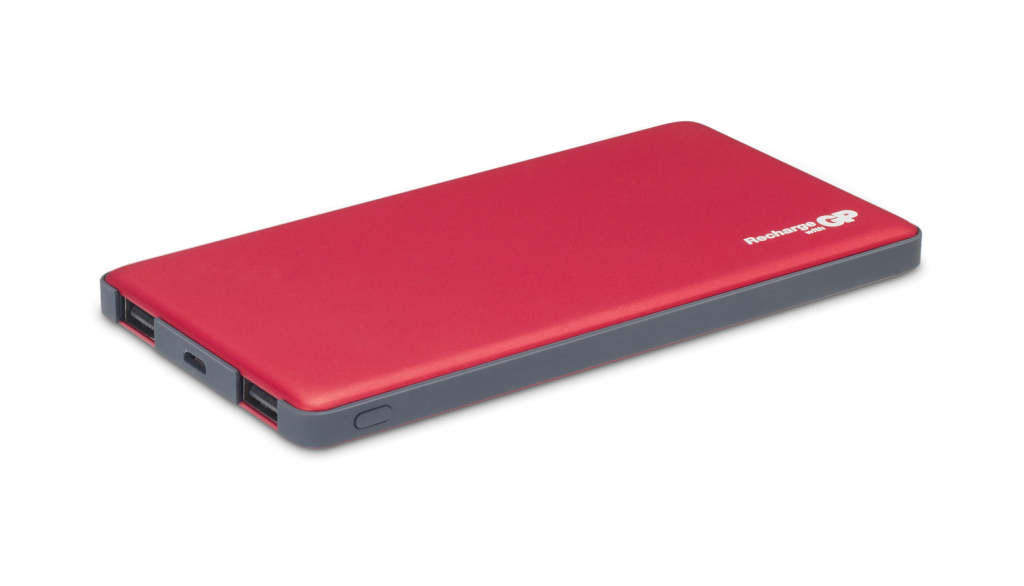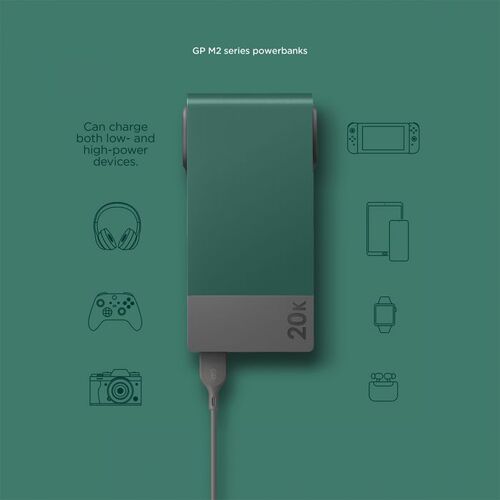Why is the power bank your new indispensable ally?
Today’s digital lifestyle demands constant power. Whether for our cell phones, tablets or other electronic gadgets, autonomy is a major issue. This is where the power bank comes in, a simple and effective solution for keeping your devices charged, even on the move.
In this article, we’ll explore in detail what a power bank is, how it works, its capacity, and how to choose the right one for your specific needs.
What is a power bank?
A power bank is a portable external battery that can be used to charge electronic devices. It usually takes the form of a compact case containing one or more rechargeable batteries.
These batteries store energy that can be used to charge devices such as smartphones, tablets, MP3 players and other electronic gadgets that can be charged via a USB port.
How does a Power Bank work?
The operation of this is device is fairly straightforward. It contains one or more lithium-ion or lithium-polymer batteries that store energy when charged. This energy is then redistributed to your devices via a USB port when you plug them into the external battery.
It’s worth noting that the amount of energy an external battery can store, as well as the speed at which it can charge your devices, varies according to its capacity and technology.
What is the capacity of a Power Bank?
Its capacity is generally measured in milliampere-hours (mAh). This is a unit of measurement that indicates the amount of energy the battery can store.
For example, a 10,000 mAh power bank can theoretically fully charge a smartphone with a 2,500 mAh battery four times over. However, due to various factors such as energy efficiency and battery quality, in practice you’re likely to get around 70-75% of this provision.
Which Power Bank to choose? 10,000 mAh or 20,000 mAh?
The choice between a 10,000 mAh or 20,000 mAh power bank depends on your specific needs. If you only have one device to charge, and generally have access to an electrical outlet, a 10,000 mAh external battery may be sufficient.
However, if you have several devices, or plan to be away from a power source for an extended period, a 20,000 mAh external battery would be more appropriate.
How long does it take to charge a 20,000 mAh power bank?
The time needed to charge a 20,000 mAh battery depends on several factors, including the speed of the AC adapter used to charge the external battery and the energy efficiency of the battery itself.
In general, a 20,000 mAh external battery can take between 10 and 12 hours to fully charge with a standard charger. However, with a fast charger, this time can be halved.
Power bank Powertec: Cutting-edge technology for your energy needs
Our external batteries are more than just external batteries. They feature the latest fast-charging technology, Power Delivery, to ensure your devices charge quickly and efficiently. With this technology, you’ll never have to worry about running out of battery in the middle of the day.
Whether you’re on a business trip, hiking or just out and about, they’re the perfect accessory for all your portable charging needs. They give you the freedom to keep your electronic devices charged, wherever you are and whatever you’re doing.
For those who prefer a more eco-friendly solution, or for digital nomads, we offer our Powertec portable solar panel. It allows you to charge your external battery when you’re out and about, or when you’re far from an electrical outlet.
Discover our external battery today!
FAQ:
1. Why use a Power Bank?
A power bank lets you keep your electronic devices charged when you’re on the move, traveling or during a power cut. It’s compact, portable and can charge several devices at once.
2. How does a Power Bank work?
An external battery stores energy in its built-in battery when you charge it. This energy can then be used to charge your electronic devices via a USB port.
3. What capacity for Power Bank?
The capacity of this is measured in milliampere-hours (mAh) and indicates the amount of energy it can store. The choice of capacity depends on your specific charging needs.
4. Which power bank is good 10,000 mah or 20,000 mah?
The choice between a 10,000 mAh or 20,000 mAh power bank depends on your specific needs. If you have several devices to charge or need long autonomy, a 20,000 mAh external battery would be more appropriate.
5. How long does it take to charge a 20,000 mAh external battery?
The time needed to charge a 20,000 mAh power bank varies according to the speed of the AC adapter used. In general, it takes between 10 and 12 hours for a standard charger.
Conclusion :
This has established itself as an indispensable tool for keeping our electronic devices charged, especially in an increasingly mobile world. Whether you need to keep your smartphone charged during a long trip, or simply want a power reserve for your gadgets, an external battery may be the solution.
In short, they’re the ideal choice for all your portable charging needs. They combine cutting-edge technology, versatility and respect for the environment to deliver an unrivalled charging experience.



